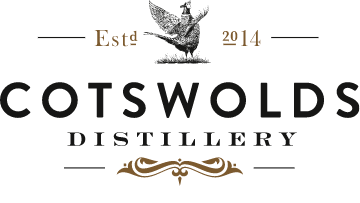
We’ve come to realize that there’s a unique aspect of our whisky production that’s noteworthy and, we think, brings up a little-discussed issue – marriage.
The marriage element here is obviously not the white-dress variety but refers to the blending of various casks of whisky that will go into a bottling together. Unless you’re talking about a single cask release, all single malt whiskies are made by blending together multiple casks (of single malt, from the same distillery). In the case of our Cotswolds Signature Single Malt Whisky, each bottling represents a batch of 15 to 25 casks with 70% of the batch coming from our shaved, toasted, re-charred red wine barriques (STR) and 30% coming from first-fill ex-bourbon barrels. These two cask types create two very different – and complementary, we believe – flavour profiles, even though they both start life being filled with the same new make spirit. We bring them together in a blend, as we believe they create something greater than the sum of the parts. That’s the reason for blending, to combine flavours and characteristics to create something complex and nuanced. The malty vanilla and coconut tones of our ex-bourbon casks work very well with the red fruit, spice and caramel of the STR; individually they are both delicious but together they make a multi-layered and harmonious whisky.
In the case of most whiskies, the blending and 'proofing down' (with water, to bottling strength) is a process that takes place relatively quickly, sometimes only days before bottling, in a vat or tank. That’s where we are different. Why? Probably because we’ve had a lot of exposure to a number of eminent French distillers (Cognac and Calvados), who strongly believe that spirit gets 'shocked' when other spirits and/or water are introduced, and that to optimize the flavour integration process there should be a period of time where the newly-married liquids intermingle and rest together in cask – hence the term 'marriage'.
So how does it work? When the casks are around 33 months old, we roll them into the casking room, take the bung out and disgorge them into our marrying vat. The bourbons and STRs go in and are stirred together through recirculation (which also adds a bit of oxygenation). At this point, we do an initial proofing down (AKA dilution with de-mineralised water) to lower the ABV from natural cask strength -usually about 62% at this stage - to 50%. Then some more stirring; the idea here is to avoid ‘layering’. Water is denser than alcohol, so if you just plonk some water and some whisky is a vessel together you can get them sitting in layers on top of each other, or pockets of water sitting in amongst the whisky.
Stirring complete, we empty the newly-combined whisky back into the same set of casks it just came out of, except that these casks - which previously held either ex-bourbon or STR-matured whisky, now hold a mixture of 70% STR and 30% ex-Bourbon. Back to the warehouse with these casks for the final three months of their maturation. For us, these final three months are a crucial last chapter in the whisky. The final dilution, just before bottling, takes the now-married blend from 50% down to 46% ABV.
Clearly, we’ve been fortunate to have great Scottish know-how – from our wonderful late flavour mentor Jim Swan – along with French influence from noted distillers like Hubert Germain-Robin and Emmanuel Camut. We try our best to do things gently and take our time, all in the interest of better, more balanced integration of flavour.
Ingredients
(Serves 1):
50ml Cotswolds Dry Gin
A bottle of Indian Tonic Water
Grapefruit slice
A bay leaf
A handful of ice
How to make
Place all of the ingredients into an ice-filled shaker, shake and strain into ice-filled glass. Garnish with a slice of grapefruit and a bay leaf.


